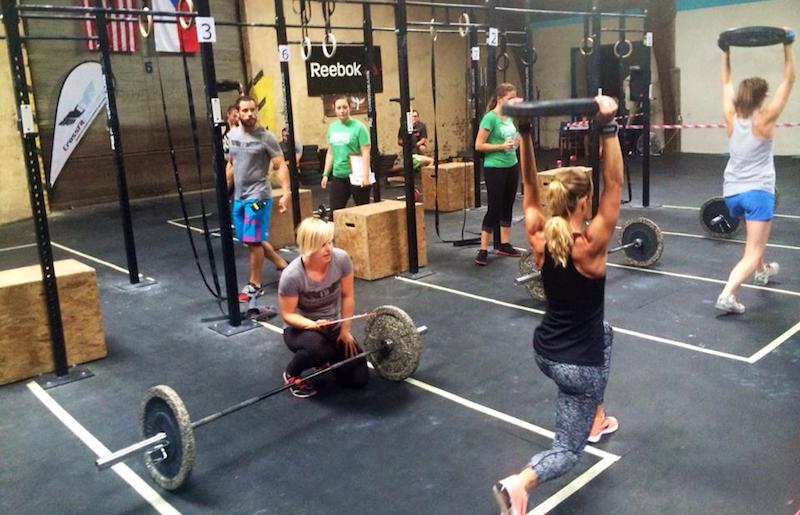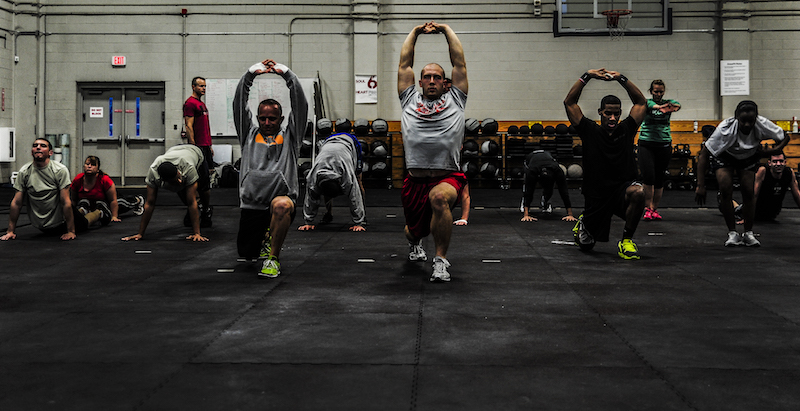
Sticking with a workout program can be hard after the initial excitement wears off.
But one thing that makes it easier to stay committed over the long haul is seeing visible results.
If you’re looking to get started doing CrossFit — a cross-training hybrid that blends conditioning, strength, plyometrics, and gymnastics work, among other things — you’ll find the workouts unforgiving and the gym costs high.
But will the results keep you going?
What kinds of results can you expect after doing CrossFit for a month?
CrossFit is a killer strength and conditioning workout. You’ll feel stronger and more energetic due to better conditioning pretty quickly. You likely won’t get super “jacked” in a month, but if you stick with it, you can get pretty damn strong.
If you eat properly while training, you could lose a few pounds in your first month of CrossFit and come out looking leaner and more toned.
I spoke with a handful of strength coaches, exercise science experts, and real CrossFitters about what you should expect if you commit to regular CrossFit workouts for 30 days. So let’s take a look.
Strength & Muscle
Strength training and Olympic weightlifting moves are a key component of most CrossFit workouts.
You’ll work on form, technique, and strength on lifts lke:
- Cleans & jerks
- Push presses
- Deadlifts & variations
- Pull-ups
- And more
So what can you expect after learning and practicing these moves for about a month?
In your first 4 weeks of CrossFit, your overall strength and the weight you can lift will increase dramatically.
(In weightlifting this is often called your “newbie gains” period.)
Dr. Ian Shaw writes that “the earliest signs of improvement can often be seen after the first few weeks of training, where beginners see an increase in the amount of weight they can lift as the nervous system adapts to the new workload.”
But will you see huge amounts of muscle gain right away?
Probably not.
In general, most natural athletes can add about 1-2 pounds of muscle per month with the right diet and training.
Your strength will explode, but the extra pound or so of muscle spread out over your whole body won’t be super noticeable.
You’ll need to stick with it a little longer to get the visible results you’re looking for.
“Most beginners can expect noticeable muscle gain and weight loss within the first 8 weeks of regular training,” Shaw adds.
How to keep track of progress:
Your coach or instructor should help, but it’s always a best practice to write down exactly what you did every workout.
Keep a journal or log of every weight you lift, how many reps you got, how it felt, and more.
That’s the best way to ensure you’re making progress!
It also helps to take pictures of your physique before you start and every week or so along the way. The results will be highly motivating.
Weight Loss
So you won’t be jacked after just 4 weeks of CrossFit.
But that doesn’t mean you can’t look (and feel) dramatically different.
Sadi Khan, a medical student and fitness researcher for RunRepeat.com, says you can expect to lose 2-4 pounds in your first month — provided your diet is in check. There are also some other factors involved like your starting weight, age, etc.
Adding strength and a little bit of muscle while losing fat is a recipe for a killer physique.
So what’s the best way to lose weight and fat with CrossFit, while still having great workouts?
It’s a deeper topic than we can cover right here, but the basic principles are:
- Eat in a moderate calorie deficit every day (about 500 calories under maintenance, or your bodyweight in pounds x 12)
- Get plenty of protein (somewhere around 8.g per pound of bodyweight every day)
- Refuel periodically or when you feel like crap using refeed days
A simple way to do this without counting calories is to eat more fresh, filling foods (like vegetables and whole grains) while getting lots of lean protein.
However you choose to approach your nutrition during your first weeks of CrossFit, it’s important to have a plan if you want to see results around your waistline.
“If you are going into this for weight loss you should consider fixing your eating habits first. No experience program can compete with bad nutrition,” says Oscar Verduga of his first experience with CrossFit.
(P.S. You don’t have to lose any weight at all to enjoy CrossFit. Fuel up with all the calories and protein you need… and while you won’t lose weight, you’ll get a lot stronger and feel great.)
How to keep track of progress:
Weigh yourself, duh!
I don’t recommend weighing yourself every day because the scale bounces around too much due to water retention, food in your stomach, and more. Shoot for a weigh-in 2-3 times per week.
It’s best to weigh yourself first thing in the morning (especially after you’ve, uh, gone to the bathroom) and wearing the same thing each time (like just underwear or even naked).
You’ll get the most consistent readings that way.
Conditioning, Mobility, Flexibility & Agility

A lot of the biggest benefits of doing CrossFit aren’t visible in the mirror.
In just a few short weeks of regular workouts, you’ll begin to notice dramatic improvements in your conditioning. Over time, you’ll also become more flexible, agile, and mobile.
What differentiates CrossFit from standard weightlifting is the introduction of explosive, athletic training, bodyweight fitness, and other disciplines that do more than just build strength and muscle.
You’ll:
- Challenge your heart rate and lung capacity with cardio and HIIT
- Build explosive strength with plyometrics (box jumps)
- Do multi-joint movements like kettlebell swings, jerks, cleans, and more
One of the biggest benefits of joining a CrossFit gym (or box) and working out in a group with a qualified instructor is that they’ll always walk you through proper warm-ups and cool-downs.
On your own, it’s easy to skip your stretching and mobility work. Not so in a group setting!
This kind of training will do wonders for your overall levels of fitness, far beyond whether you have abs or not.
“Your conditioning will definitely improve,” says Verduga. “With better conditioning you get other benefits such as more energy, easier to get up in the morning, better mood, higher self confidence, muscle tone.”
Your work during CrossFit could help you finally touch your toes, relieve lower back pain, and give you better hip mobility.
However, be sure to use proper form on all of the exercises (your coach or instructor should help), otherwise you’re likely to go in the OPPOSITE direction.
How to keep track of progress:
Conditioning and flexibility are things you can feel more than measure.
But you can always set small goals for yourself to measure against, like being able to touch your toes (or how far past your toes you can reach).
In your workout journal or log (as mentioned above) you could also write down a basic RPE (Rate of Perceived Exertion) for your workout or certain exercises. It’s a basic 10 point scale where you self-observe how hard you had to work to complete a workout or rep.
If this number begins to go down for certain activities, you’ll know your conditioning is improving.
Mind, Mood & More
By now you know CrossFit is an excellent choice for your body.
But what about your mind?
Is it fun? Will it give you more energy and put you in a better mood?
The truth is, most forms of regular fitness will. The physical and mental health benefits of doing just about anything physical on a regular basis are undeniable.
But when it comes specifically to CrossFit, and the supportive/competitive group exercise setting, here’s a little of what you might expect:
“Overall I really enjoyed it,” says Verduga. “There is a strong sense of community. The fun part is having a group of great people supporting you along the way.”
“The positive environment of a CrossFit gym can help boost motivation, improve mood and encourage a rise in energy levels that may well spill into your daily life,” adds Shaw.
Wrapping Up
CrossFit probably isn’t for everyone.
The workouts are quite intense, and you might find keeping up with your monthly fees becomes too expensive for your liking.
But if you can stick it out for a month or so, you’ll start to see great results like:
- Increased strength and muscle tone
- Some fat loss (if you eat right)
- Elevated energy and mood
- Dramatically improved conditioning
But what did I miss? What are your favorite things about CrossFit workouts, and what did you notice after your first 30 days?
Before you go, here’s some other stuff you might like:
- CrossFit vs Orangetheory explained
- What to expect after one month of weightlifting
- What to expect after one month of yoga
Hope this helps!